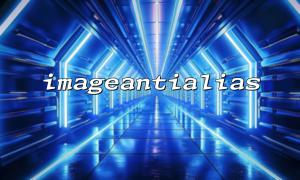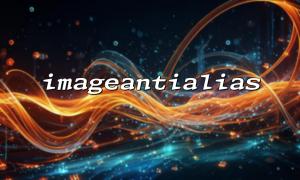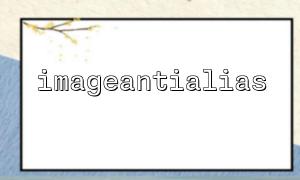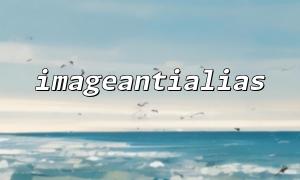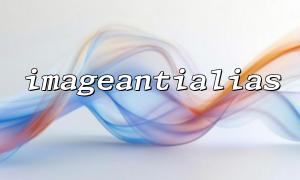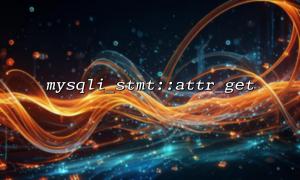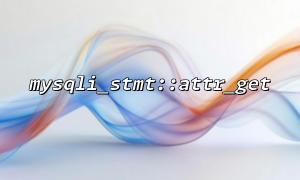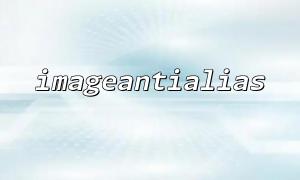When PHP performs image processing, imagecreate() is the basic function to create a blank canvas, while imageantialias() is used to turn on or off the anti-aliasing function of the image. Using these two functions reasonably can effectively improve the quality of generated images, especially when drawing lines and graphics, avoiding jagged edges, making the image smoother and more natural.
This article will introduce the usage and matching techniques of these two functions in detail, and attach sample code to help you better utilize PHP for image processing in actual development.
imagecreate() is a function in the PHP GD library that creates a blank image resource of a specified size. It returns an image identifier for subsequent drawing operations.
$image = imagecreate(400, 300); // Create a picture 400x300 Blank canvas
The images created use palette-based by default, which is suitable for simple image generation needs. If true color support is required, you can use imagecreatetruecolor() .
imageantialias() is used to enable or disable anti-aliasing effect, mainly acting on drawn lines and shapes, reducing jagged edges, and improving visual quality.
imageantialias($image, true); // Turn on anti-aliasing
Note: The anti-aliasing function is only valid for certain drawing functions, such as imageline() , imagepolygon() , etc.
Create a canvas using imagecreate() :
$image = imagecreate(400, 300);
Assign colors:
$background_color = imagecolorallocate($image, 255, 255, 255); // White background
$line_color = imagecolorallocate($image, 0, 0, 0); // Black lines
Before drawing lines, turn on anti-aliasing:
imageantialias($image, true);
For example, drawing a slash:
imageline($image, 50, 50, 350, 250, $line_color);
Finally output the image and release the resource:
header('Content-Type: image/png');
imagepng($image);
imagedestroy($image);
<?php
// Create a canvas
$image = imagecreate(400, 300);
// Assign colors
$background_color = imagecolorallocate($image, 255, 255, 255); // White background
$line_color = imagecolorallocate($image, 0, 0, 0); // Black lines
// Turn on anti-aliasing
imageantialias($image, true);
// Draw multiple line segments to form a polygon
$points = [
50, 50,
350, 50,
350, 250,
50, 250,
50, 50
];
// Draw lines
for ($i = 0; $i < count($points) - 2; $i += 2) {
imageline($image, $points[$i], $points[$i + 1], $points[$i + 2], $points[$i + 3], $line_color);
}
// Output picture
header('Content-Type: image/png');
imagepng($image);
imagedestroy($image);
?>
imageantialias() only supports the best results for true color images created by imagecreatetruecolor() , but it still works on palette images created by imagecreate() , and the effect may not be as obvious as true color images.
Anti-aliasing function will consume a certain amount of performance and need to be weighed when generating pictures in large quantities.
If you need to draw complex graphics or achieve higher quality anti-aliasing, it is recommended to use imagecreatetruecolor() with imageantialias() .
By using imagecreate() and imageantialias() reasonably, the lines and smoothness in PHP image processing can be effectively improved. This article shows the basic usage, hoping to help you better understand and apply these two functions to create a more beautiful dynamic picture.
